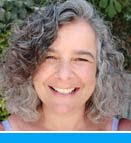The park is built around the Hadera River which flows for some 50 kilometres through Israel's coastal plain before spilling into the sea to the north of Givat Olga, a neighbourhood in Hadera. Its main tributaries are the Haviva, Yitzhak, Hadera and Iron rivers. With time, extensive development in the surrounding area caused the river to become polluted by effluent flowing from factories and the local sewage plants, and until recent years, the area was a blot on the ecological landscape. However, after the Maor David Power Station (subsequently renamed Orot Yitzhak in memory of Israel's late Prime Minister Yitzhak Rabin) was built on the coast just north of where the river flows into the sea, a decision was taken to rehabilitate its western section. This once polluted meandering trickle has now been transformed into a fine straight river 40 metres wide, banked by a 1.3 km long promenade.
The JNF and the Israel Electric Corporation joined forces and established a development authority for the park. The rehabilitation work involved installing a pipe to channel the warm water beneath the power station on its way to the river. The power station pumps this water from the sea to cool its electricity production units. After use, the water is returned to the sea, about 10 degrees warmer than it had been originally, but otherwise no different from before; no pollution is involved.
Coal ash from the power station was used to construct a 17 metre high ramp on the river's north bank. After construction the ramp was covered with soil and coconut matting and planted with trees and shrubs to keep it stable, prevent erosion and integrate it into the landscape of the park. After stabilisation with stones and concrete, the south bank of the river has been transformed into the promenade. Its centrepiece is Fountain Square, where warm seawater bubbles up into a shallow pool. All along the riverbank fisherman can be observed casting their lines into the water and catching saltwater fish (mainly mullet).
Hefziba Farm was just a short drive from the Hadera River Park. The farm was established on the banks of the Hadera River in 1906 in an area purchased by Yehoshua Hankin. His wife, Olga Hankin, named the site Hefziba, inspired by Isaiah's prophecy: "Nevermore shall you be called 'Forsaken,' nor shall your land be called 'Desolate;' But you shall be called 'I delight in her [Hefziba]" (Isa. 62:4), in the hope that the farm would not be abandoned and would thrive. The founding members of Kibbutz Hefziba, and other pioneers, lived first on the premises of the farm. Citrus fruit was grown there until World War I.
The Israel Electric Corporation purchased the 350 dunam (88 acre) plot in 1992 and restoration work is currently underway, together with the help of the National Council for the Preservation of Buildings and Historic Sites and the Hadera municipality. The farm is being reconstructed to house a historical park that will be a tribute to the early settlement of Israel.
The agricultural site, which now adjoins the busy Haifa-Tel Aviv motorway, was a symbol of efforts to make the desert bloom 100 years ago. It was established in the heart of sand dunes, on the northern coastal plain, among remnants of a forest that once contained Tabor oaks, ancient carobs, fruit orchards and eucalyptus groves. Some of the original buildings from 1906 are still standing, including the farm manager's home and the old pump house on the riverbank. Beit Hahava (the farmhouse), above, has a sloping tile roof and a large veranda. It was used as the farm's office and as a dining room for the workers. The right wing of the structure was built in European style, while the left wing was built in local Arab style. Beit Hahava now serves as a visitor's centre.
The farm's heyday was in 1912, when it was expanded in response to border conflicts with Arab residents. Eight structures were built that year to house 60 workers who maintained the farm. Natural disasters, an attack of locusts and the ravages of World War I caused the site to be dismantled and finally abandoned in 1929.
The restoration project will be completed in stages over several years, and its tourism facilities are still being developed. A museum featuring the history of the farm and its surroundings is planned.
Coal ash from the power station was used to construct a 17 metre high ramp on the river's north bank. After construction the ramp was covered with soil and coconut matting and planted with trees and shrubs to keep it stable, prevent erosion and integrate it into the landscape of the park. After stabilisation with stones and concrete, the south bank of the river has been transformed into the promenade. Its centrepiece is Fountain Square, where warm seawater bubbles up into a shallow pool. All along the riverbank fisherman can be observed casting their lines into the water and catching saltwater fish (mainly mullet).
The park includes two eucalyptus groves that were planted in the 1930s to prevent the sand dunes from spreading. Between these two areas, a prehistoric site from the Kebaran period (18,000 years ago) has been discovered. Flint tools were uncovered at the site, together with the bones of animals presumed to be gazelles and fallow deer. The park is also an excellent place to observe water birds such as the common kingfisher, the grey heron, moorhens, mallards and cormorants.
An interesting aside, the four chimneys of the power station are obviously high up but the hot water channelled below attracts about 30-40 grey sharks, mainly female, that stay from November-December to March every year.
As we were leaving the Hadera River Park we noticed a white domed structure in the distance and went to take a closer look. A sign there told us the most amazing story.
"Avshalom Feinberg was born in Gedera in 1889 to his parents Israel (Lulik) and Fanny (nee Belkind), who were founders of Hadera.
He was educated in Palestine and France and was a poet and a man of letters.
In World War I he initiated the establishment of the NILI espionage group. Under the leadership of Aharon Aharonsohn, it aimed to help the British oust the Turkish regime from Palestine.
He was murdered on 20 January 1917, on his way to contact the British command in Egypt.
Fifty years later in 1967, Major Shlomo Ben-Elkana of the IDF found his remains in the Sinai Desert. He was buried in a state funeral in Mount Herzl's military cemetery in Jerusalem.
This memorial, which was planned by architect Benjamin Orell, was built by Avshalom's sisters in 1957. It was originally situated on route no. 4 in Hadera, and transferred to this park in 2011."
Further reading told me that Avshalom Feinberg was one of the leaders of NILI, a Jewish spy network in Ottoman Palestine, helping the British fight the Ottoman Empire during World War I. He was born in Gedera, Palestine, then part of the Ottoman Empire, and studied in France. He returned to work with Aharon Aharonsohn at the agronomy research station in Atlit. Soon after the beginning of war, the four Aharonsohn siblings (Sarah Aaronsohn, Rivka, Alex, and Aharon) founded the NILI underground along with Feinberg. They were later joined by Yosef Lishansky and others. In 1915 Feinberg travelled to Egypt and made contact with British Naval Intelligence. In 1917, Feinberg again journeyed to Egypt, on foot. He was apparently killed on his way back by a group of Bedouins near the British front in Sinai, close to Rafah. His fate was unknown until after the 1967 Six-Day War when his remains were found under a palm tree that had grown from date seeds in his pocket to mark the spot where he lay.
In 1979 a new Israeli settlement in the Sinai Peninsula, Avshalom, was named after him. Although it was abandoned in 1982 following the Camp David Accords, a new village by the same name was founded in Israel in 1990. In addition, among the many and varied trees on the Mount Herzl military cemetery is one lone palm tree, replanted form its original spot in the Sinai Desert. This is the famous "Palm of Avshalom" under which Avshalom Feinberg's remains were found.Hefziba Farm was just a short drive from the Hadera River Park. The farm was established on the banks of the Hadera River in 1906 in an area purchased by Yehoshua Hankin. His wife, Olga Hankin, named the site Hefziba, inspired by Isaiah's prophecy: "Nevermore shall you be called 'Forsaken,' nor shall your land be called 'Desolate;' But you shall be called 'I delight in her [Hefziba]" (Isa. 62:4), in the hope that the farm would not be abandoned and would thrive. The founding members of Kibbutz Hefziba, and other pioneers, lived first on the premises of the farm. Citrus fruit was grown there until World War I.
The Israel Electric Corporation purchased the 350 dunam (88 acre) plot in 1992 and restoration work is currently underway, together with the help of the National Council for the Preservation of Buildings and Historic Sites and the Hadera municipality. The farm is being reconstructed to house a historical park that will be a tribute to the early settlement of Israel.
The agricultural site, which now adjoins the busy Haifa-Tel Aviv motorway, was a symbol of efforts to make the desert bloom 100 years ago. It was established in the heart of sand dunes, on the northern coastal plain, among remnants of a forest that once contained Tabor oaks, ancient carobs, fruit orchards and eucalyptus groves. Some of the original buildings from 1906 are still standing, including the farm manager's home and the old pump house on the riverbank. Beit Hahava (the farmhouse), above, has a sloping tile roof and a large veranda. It was used as the farm's office and as a dining room for the workers. The right wing of the structure was built in European style, while the left wing was built in local Arab style. Beit Hahava now serves as a visitor's centre.
The farm's heyday was in 1912, when it was expanded in response to border conflicts with Arab residents. Eight structures were built that year to house 60 workers who maintained the farm. Natural disasters, an attack of locusts and the ravages of World War I caused the site to be dismantled and finally abandoned in 1929.
The restoration project will be completed in stages over several years, and its tourism facilities are still being developed. A museum featuring the history of the farm and its surroundings is planned.
From the Hefziba Farm, you can walk along the banks of the Hadera River in a westerly direction. Stone markers have recently been placed along the path that goes under a bridge on the motorway. The path leads to a dam, which prevents the polluted waters of the river from reaching the sea. From the dam, you can continue back to the Hadera River Park, where we started our day.
* This post has been shared on Wordless Wednesday (on Tuesday), Pictorial Tuesday, Our World Tuesday, Tuesday's Treasures, The Keeping It Real Link Up, Travel Tuesday, Tuesdays with a Twist, Nature Notes, My Corner of the World, Wordless Wednesday Blog Hop, Little Things Thursday, Weekend Reflections, All Seasons and Through My Lens.
* This post has been shared on Wordless Wednesday (on Tuesday), Pictorial Tuesday, Our World Tuesday, Tuesday's Treasures, The Keeping It Real Link Up, Travel Tuesday, Tuesdays with a Twist, Nature Notes, My Corner of the World, Wordless Wednesday Blog Hop, Little Things Thursday, Weekend Reflections, All Seasons and Through My Lens.












































27 comments:
Informative post.Thanks for sharing.
How lovely. Everything looks so clean. Looks like you had a nice time. I love the river! #keepingitreal
I'm glad the river was cleaned up and it looks like a wonderful park to explore. #keepingitreal
Wow - very interesting place with an even more interesting past! Thanks for sharing!
You do visit some fascinating places. I love the story of the palm tree growing from the date seeds in his pocket. xx
Enjoyed my tour with your photos. Have a great week.
Unique places to visit. I love when people decide to reverse pollution. This is so important across the globe.
...water, the source of live adds beautiful to this park. I'd love to hear the wind chime. Thanks for sharing this treasure, please stop back again.
I love when rivers have rivers walk. Looks like a great place to explore!
I enjoy your posts and photos so much! Thanks for linking up to My Corner of the World!
I was there a few months ago but didn't learn much about the history, so appreciated this. It was a funny thing - when the Giro was in Israel last year I was watching the coverage and saw a beautiful aerial shot of the park. It is quite near and I haven't been in ages so we went to visit. Happy Valentine's Day!
Amalia
xo
It's so great that they rehabilitated the river. It would have been such a shame to have left it as polluted as it was. And the fact that they got development permission to turn some of the surrounding area into a park for everyone to enjoy is fantastic! #FarawayFiles
Oh wow, I do like rejuvenated old sites like this. I think it would be an excellent spot for a Sunday stroll.
#FeetDoTravel
Love the photos near the text. Very interesting.
Super happy that is was cleaned up. What a great and amazing place. #PoCoLo
What a fascinating place to explore! And fab news that they have cleaned up the water.
Thanks for sharing with #MMBC. x
Looks like a nice park to visit, and interesting to read about the zero pollution. #FeetDoTravel
I loved this informative post...We have tried here also to rehabilitate the Great Lakes and the Niagara River that makes Niagara Falls.. I belong to a group called River Keepers who works on our waterways and there are many here...Michelle
Such lovely photos of a wonderful place xx #sundaysnap
What interesting historical facts you found along the river walk! All fascinating stories, especially the palm tree that grew from seeds in the pocket to become a marker for his grave. I'm glad the river itself is being taken care of and given a second chance to flow unpolluted.
Hi Lisa, what fascinating history the area has! How the river was restored is wonderful although I'm not sure about having so many sharks lurking beneath the waters. I've got this crazy fascination/ fear of sharks... I love the story about how Avshalom Feinberg remains were found with a tree growing from his pocket. New life from stolen life.
Thank you for popping by and sharing with #keepingitreal.
xx
The promenade is lovely! I'm so glad your Dad was able to visit this park with you!
Great your father was able to visit Hadera river park! Beautiful chime-structure/statue! They did much to improve this park.
Wow all this history - thank you for sharing all these details. Do you happen to know (only if you know it off hand - you are busy enough!) how they determined after 50 years that these were the remains of Feinberg?
Have noticed that Israel does a great job of recognizing and commemorating their heroes! What an interesting and educational post for All Seasons, Lisa - and thank you for your kind comment!
Ahhh! I love a good conservation story - so happy to hear they have cleaned up the area and made it into a lovely area for recreation and history education. Thanks so much for sharing with #FarawayFiles. Cheers from Copenhagen, Erin
What a fascinating read. How cool they found Avshalom Feinberg's remains and were able to treat them respectfully while educating the rest of us. Rehabilitation of this area is evident in your pics. I'd love to visit.
What a great place to visit - fun fact, I spent some of the best days of my life at Kibbutz Hamaapil (almost) down the road. Hedera was our nearest town!
How wonderful that so much work has been done to create such a great place for nature and wildlife. It must be quite a sight to see the grey sharks when they come for the warm waters.
Post a Comment